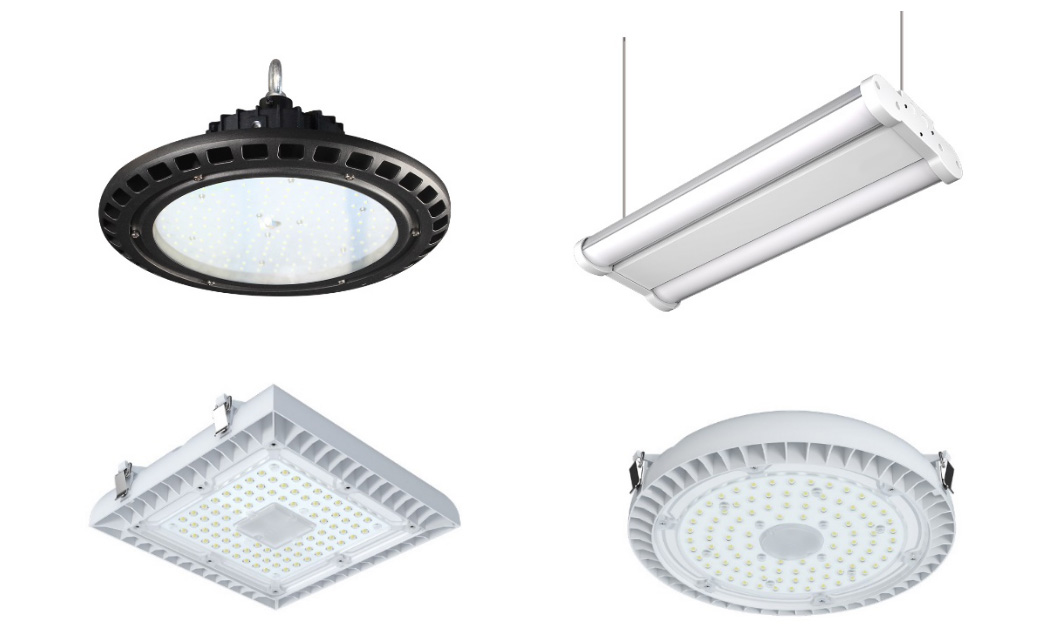LI-TIAN Lighting manufactures a variety of LED light fixtures for warehouse and industrial use. These products offer bright levels of illumination, rugged durability and excellent energy efficiency levels. Jarvis Lighting has solutions for all applications including high bay, low bay, mid-bay and task lighting.

Industrial Lighting is often grouped into one category. Inside that category, a variety of lighting applications exist. These applications include high bay lighting, low Bay lighting, mid-bay lighting, and task-specific lighting.
Applications considered “High Bay” are when lights are mounted approximately 18’ or higher. The exact definition of what makes something need a ‘high bay’ can be debated – sometimes high bay lighting is recommending for any application with a mounting height higher than 20’ for 25’.
High Bay lights are different from other lights because their light pattern is optimized for higher mounting heights. The light pattern is narrower, which directs more light downwards. This is desirable for lights mounted up high because less light is lost to the sides. The lights are mounted high enough that the light pattern is able to spread out. Shadows, bright spots and dark spots are not a problem when high bays are mounted high enough and properly spaced.
LED high bay lights are manufactured in a variety of shapes and styles. The two most common styles are round and square. Round lights are sometimes known as “UFO High Bays” because their shape looks like a flying saucer. Square high bays don’t have an interesting name – they are just known as square high bay lights.
Both style of LED high bays can be mounted in a few ways. Mounting methods include aircraft cable, chains, hook mounting and pendant mounting. One light fixture can typically be mounted in a variety of ways.
Applications considered “Low Bay Lighting” are typically mounting heights of less than 12’.
Low bay lights are different from other lights because they require a wide light pattern. The distance between the light fixture and the ground means that a narrow light pattern would create bright spots and dark spots. The wide pattern solves this issue. Prismatic reflectors are commonly used to widen the light pattern and to direct some light towards the ceiling. Mounting methods for low bay lights are similar to high bay lights.
Applications considered “Mid-Bay Lighting” are typically mounting heights of 12’-20’.
Mid-bay lights differ from other lights because their light patterns are medium-wide. They do not have the narrow, downward directional light output of a high bay. The mid-bay light pattern is slightly more focused than the low-bay light pattern. LED mid-bay light fixtures typically mount in similar methods to high-bay and low-bay lighting
Task-specific lighting is a broad category. The goal of any task lighting is to optimize the visibility of a specific task. Common applications include work station lighting, machine lighting and dock lighting.
Work stations and machines are commonly illuminated using an LED light fixture mounted directly over the work area. Considerations include the environment (such as moisture, chemicals or other factors) and also the mounting height. Optimal mounting height and fixture selection will create a bright workspace that does not have glare.
Dock-lighting commonly consists of a focused light fixture that is attached to a moveable mounting arm. This setup is installed next to a loading dock inside a building. During unloading and loading, the light is turned on and aimed into the trailer or container. This improves visibility and creates a safer working environment. A properly designed and installed dock light will illuminate the loading area without creating too much glare.